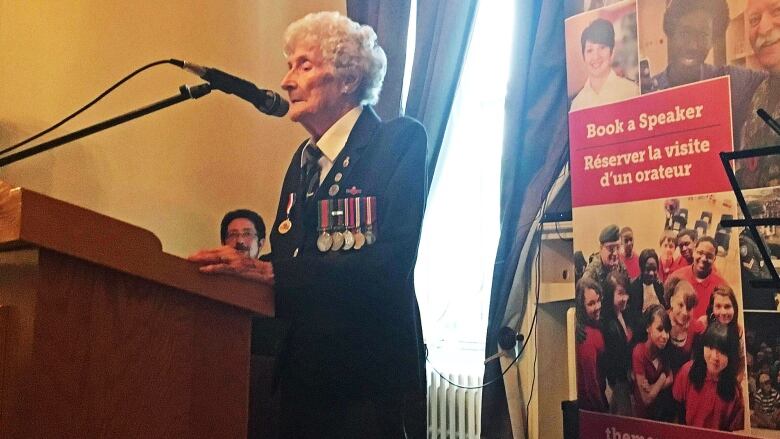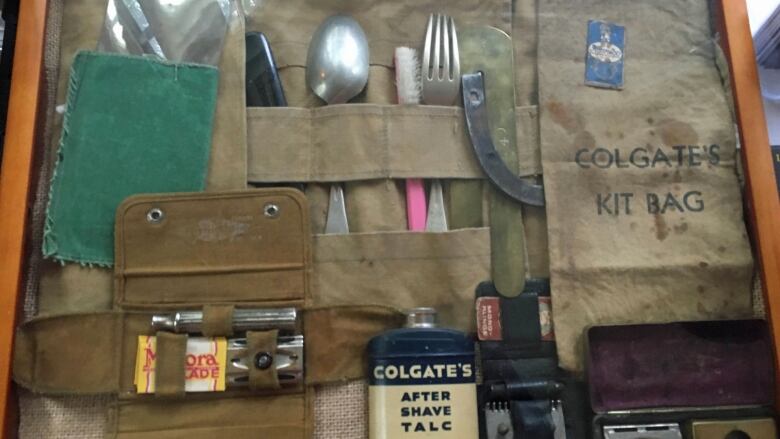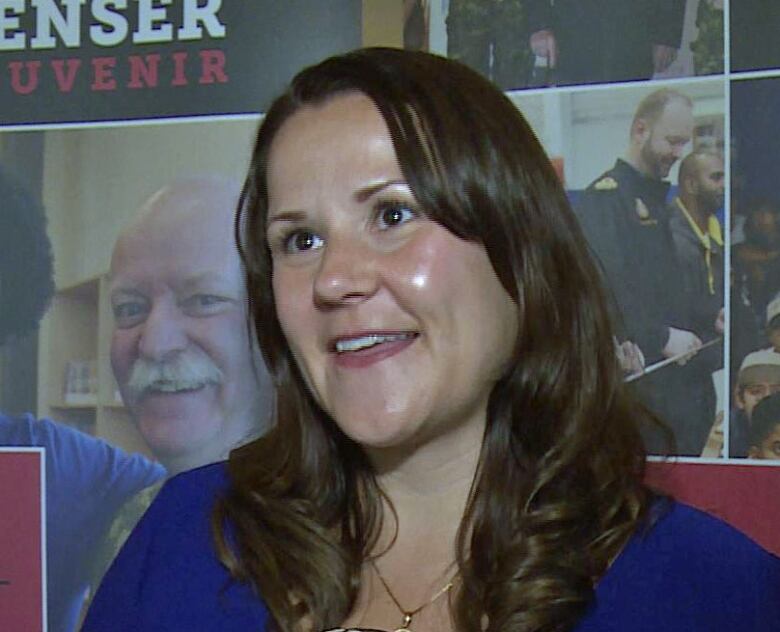D-Day gathering captivated by veteran's WWII memories
'All I recall was waves and waves of planes and planes'

You could hear a pin drop at the Haviland Club in Charlottetown Monday evening as Second World War veteran Joyce Paynter told her story of the war, which started in a town south of London, England.
"I was on my way home from school and all these planes were swirling around in the sky and swooping down and machine gunning," said Paynter.
"I went home to my mother and told her and she told me that the war had started. And, as I said, I didn't think it was going to affect us too much."
The last generation to meet WWII veterans
Monday was the 72nd anniversary of D-Day, the beginning the end of the war in Europe.
The evening was organized by Historica Canada, which runs The Memory Project. The project brings veterans to speak to Canadians young and old, and runs an online archive of their stories. It started after the last Canadian First World War I veteran died.
Brigitte D'Auzac, director of programs and development with Historica Canada, said they have received amazing feedback from the project, especially from young people.
"The biggest feedback we get is how touching the stories are and how important this is, because these kids will be able to say that they saw World War II veterans, which the next generation won't be able to say."
A Canadian war bride
As Paynter continued her story, the group heard how she had to stop going to school for fears of bombing.
I can't say it was love at first sight.- Joyce Paynter
She started to volunteer for the Red Cross, delivering blood for the wounded. On her way home from volunteering something happened that would eventually bring her to Canada.
"It was a bad air raid and we had to get off the bus and seek shelter, and that's where I met this man," she said.
It was Arthur Paynter, a solider from P.E.I who was destined become her husband, to bring her back to Canada, and to live and die with her here.
"So he offers to walk me home, and I can't say it was love at first sight because everything was blacked out and you couldn't see one another very well," she said.
Basic training
After they married Arthur left for Italy and she decided to join up as well. She worked in London at Canadian Military Headquarters with many other women, but she was trained just like her male counterparts.

"When I took my basic training I was trained for battle at that time, at 18. I mean, commonplace today but not back then, because at that time 1944 they thought Hitler was going to invade England," said Paynter.
"I was given a rifle, taught how to shoot, talk all about bombs and booby traps and all this kind of thing."
With the security and secrecy before D-Day, June 6, 1944 started like any other day for Paynter, but it became clear early on that something important was happening.
"All I recall was waves and waves of planes and planes," she said.
"I remember thinking to myself, 'Oh, what's going on now? Is this the invasion? Are we being invaded or are they invading?' So I got kind of nervous and thought maybe this is what I was trained for."
V-1 flying bombs target London
Paynter did not escape the war unscathed.
"They started with these buzz bombs," she said.
"They would send them over; it wasn't like the other bombs. You could hear sort of a motor and then and then it would cut out and you didn't know where it was going to land."
The buzz bombs, also known as V-1 flying bombs or doodlebugs, were an early form of cruise missile.
The first V-1s struck London a week after D-Day, and as many as 100 a day were launched at southeast England. In all more than 9,500 were fired, only stopping when the last launch site within range of England was taken by the allies in October.
Nervous exhaustion
"I was hospitalized then because I was quite sick and throwing up," said Paynter.
"I guess in the First World War they called it shell shock. When I was hospitalized after four weeks they finally decided, and they called it nervous exhaustion due to the war. And of course we all know what it is today."
Paynter was suffering from PTSD.

D'Auzac said having veterans get out and talk about their experiences as part of The Memory Project is helping with that too.
"We've had some younger veterans who have told us that this was part of their getting better, speaking into classrooms, speaking about their military service and how that made them feel better," she said.
In the end Paynter told the crowd to remember the peace, not the war, and count our blessings for the peace we have known in our lives.
- MORE P.E.I. NEWS |Charlottetown park-and-ride program stalls
- MORE P.E.I. NEWS |Charlottetown panhandlers to be offered help












_(720p).jpg)


 OFFICIAL HD MUSIC VIDEO.jpg)
.jpg)



























































































